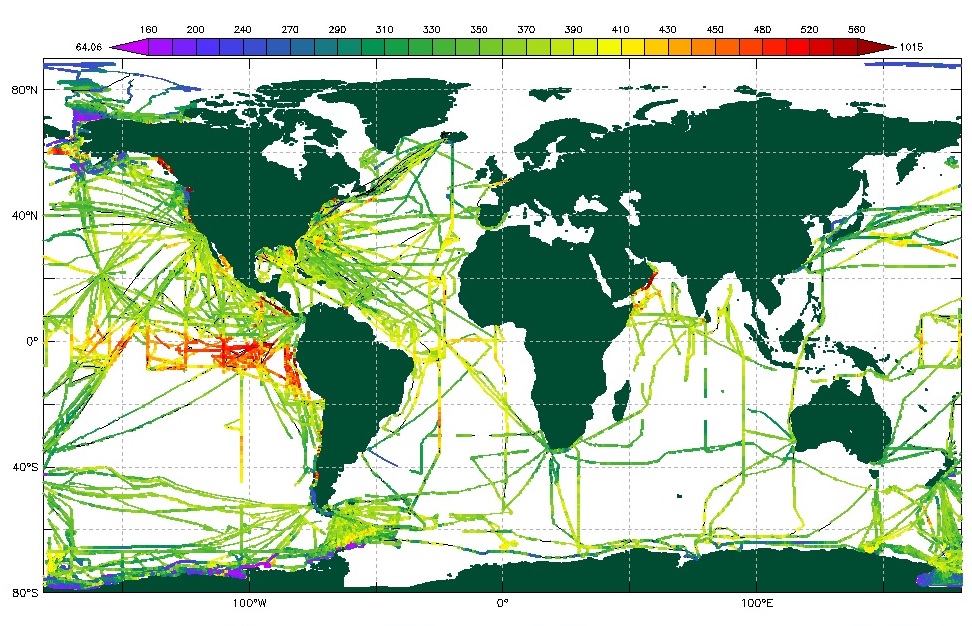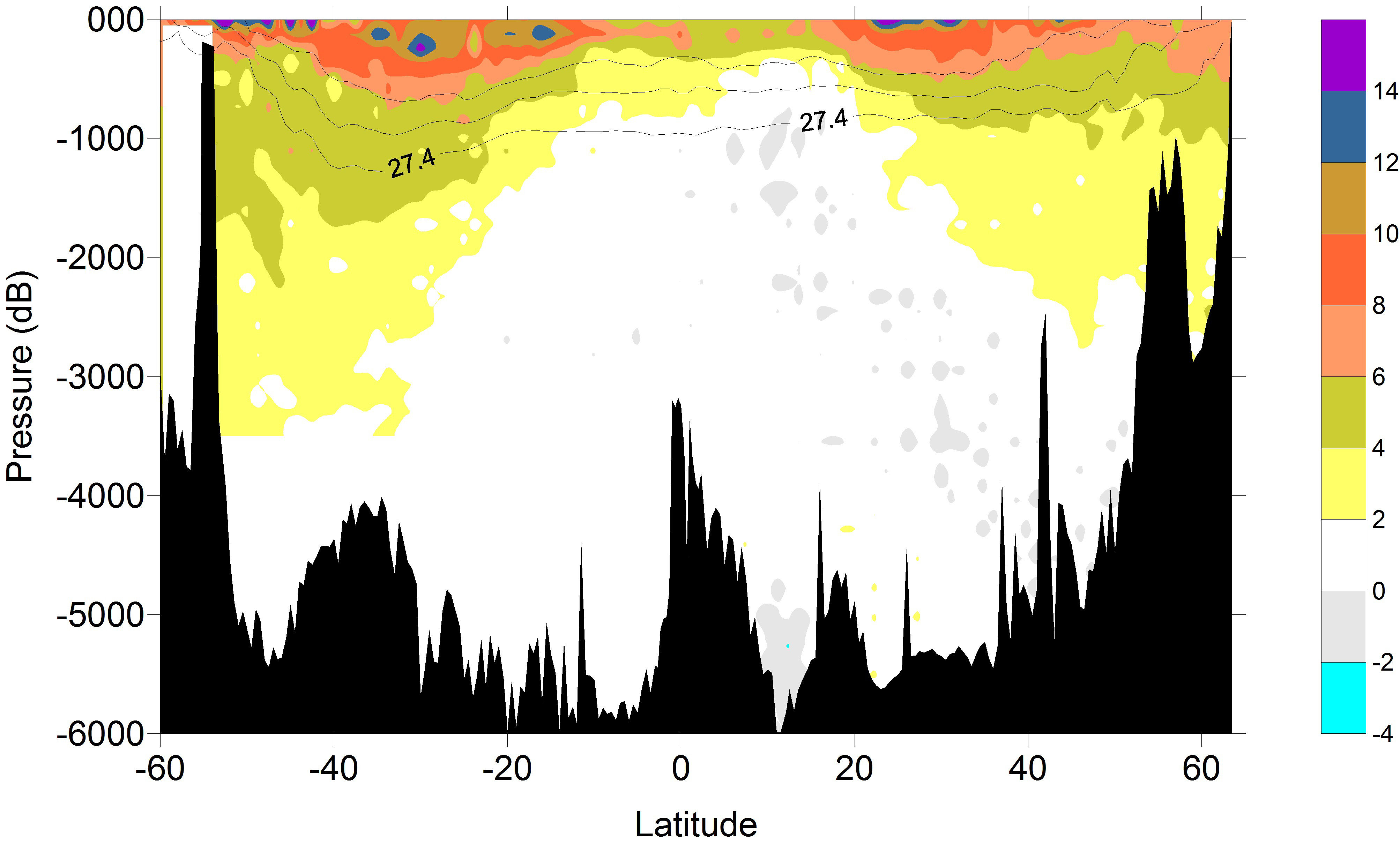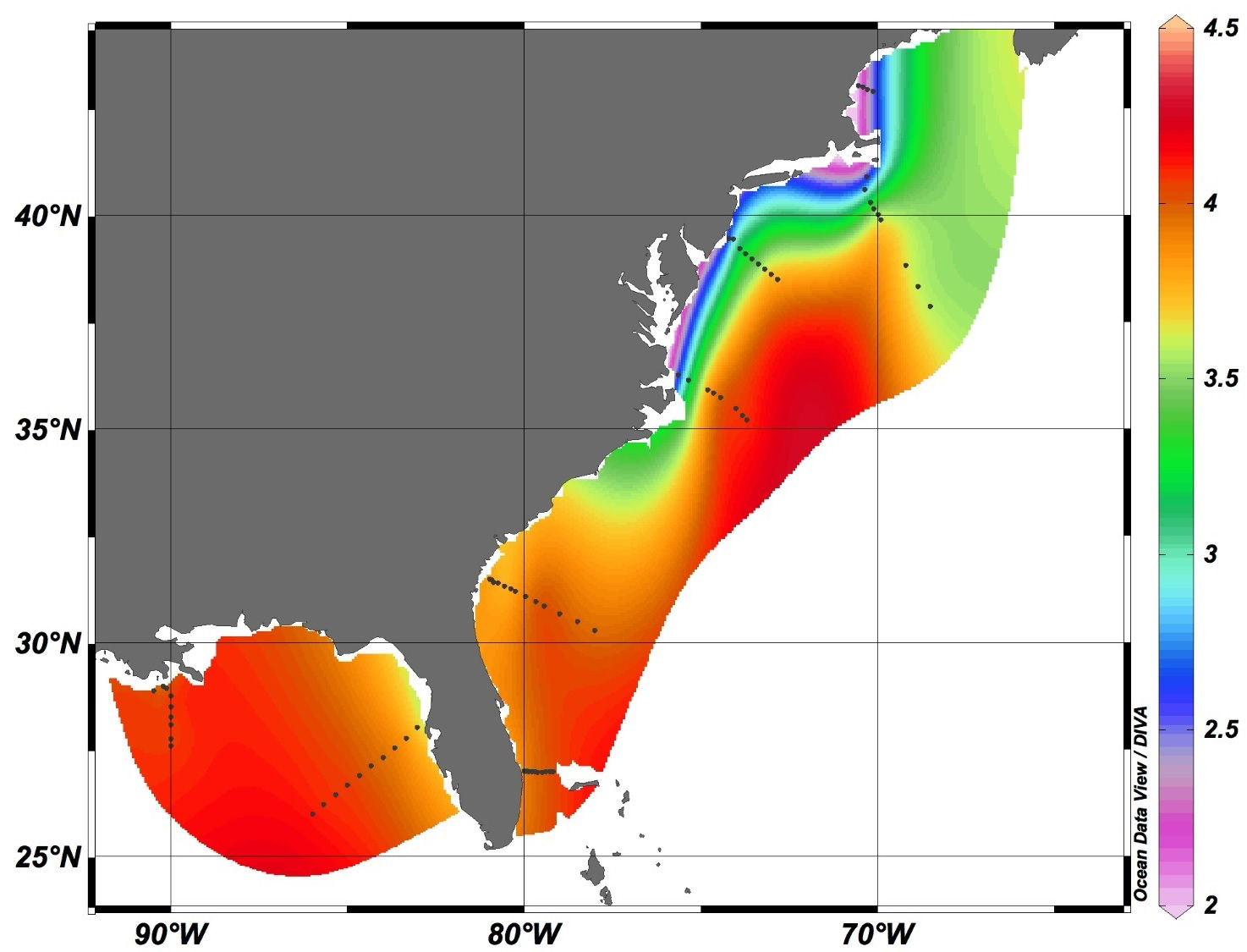The Ocean Carbon Cycle (OCC) group at AOML researches the transport and the transformation of carbon in the ocean. The overarching question that is addressed is "What has happened to the carbon dioxide emitted by human activities and what is it's impact on ocean ecosystems?". The efforts by AOML's OCC group include:
- Determining the air-sea CO2 fluxes from surface water CO2 measurements on ships of opportunity (SOOP).
- Quantifying the decadal changes of carbon in the ocean as participants in the GO-SHIP repeat hydrography surveys.
- Establishing a coastal ocean acidification observing system in the Gulf of Mexico and East coast of the US.
SOOP-CO2
AOML's OCC group leads the largest Ship of Opportunity CO2 (SOOP-CO2) consortium in the world. Currently there are 11 ships outfitted with automated instruments taking surface water measurements. The data from SOOP ships, along with an improvement in the determination of gas transfer and in global wind products, have lead to a 20% decrease in the uncertainty of global sea-air CO2 flux estimates. The findings suggest that uptake of CO2 by the oceans, currently ~2.5 Pg C yr-1, is increasing over time; however, the CO2 released to the atmosphere by fossil fuel burning is increasing faster.

Surface water pCO2 along SOOP-CO2 transects (1990-2013)
GO-SHIP Repeat Hydrography
AOML's OCC group participates in global research cruises that are repeated every decade to look at changes in the ocean. The amount of CO2 that has been stored in the subsurface ocean over the last decade is about 24 Pg C (or about 25% of the total CO2 released by fossil fuels) but there are large regional differences due to changing circulation.

Change in anthropogenic carbon along A16 Transect (1993-2005)
Gulf of Mexico and East Coast Ocean Acidification
Increasing CO2 levels in the ocean are decreasing the carbonate ion levels and impacting calcifying organisms that utilize carbonate. The impact can be measured through monitoring the aragonite saturation state in the coastal water via research cruises, SOOP observations, and moorings (by our partners).

Argonite saturation states in surface water (GOMECC-2 Cruise)
Links to Relevant Websites
| Global and Regional CO2 Data: | Programs: | Partners: |
| Surface water CO2 | SOCONET | PMEL Ocean Carbon |
| SOCAT | NOAA Climate Obs Division | LDEO CO2 |
| Takahashi LDEO | NOAA Ocean Acidification | Explorer of the Seas RSMAS |
| GO-Ship Repeat Hydrography | GO-SHIP | AOML PhOD SOOP |
| OCADS | SOCOM | |
| CCHDO | SOLAS | |
| Ocean Acidification | IMBeR | |
| NCEI OADS |